- News
- Reviews
- Bikes
- Accessories
- Accessories - misc
- Computer mounts
- Bags
- Bar ends
- Bike bags & cases
- Bottle cages
- Bottles
- Cameras
- Car racks
- Child seats
- Computers
- Glasses
- GPS units
- Helmets
- Lights - front
- Lights - rear
- Lights - sets
- Locks
- Mirrors
- Mudguards
- Racks
- Pumps & CO2 inflators
- Puncture kits
- Reflectives
- Smart watches
- Stands and racks
- Trailers
- Clothing
- Components
- Bar tape & grips
- Bottom brackets
- Brake & gear cables
- Brake & STI levers
- Brake pads & spares
- Brakes
- Cassettes & freewheels
- Chains
- Chainsets & chainrings
- Derailleurs - front
- Derailleurs - rear
- Forks
- Gear levers & shifters
- Groupsets
- Handlebars & extensions
- Headsets
- Hubs
- Inner tubes
- Pedals
- Quick releases & skewers
- Saddles
- Seatposts
- Stems
- Wheels
- Tyres
- Health, fitness and nutrition
- Tools and workshop
- Miscellaneous
- Tubeless valves
- Buyers Guides
- Features
- Forum
- Recommends
- Podcast
feature
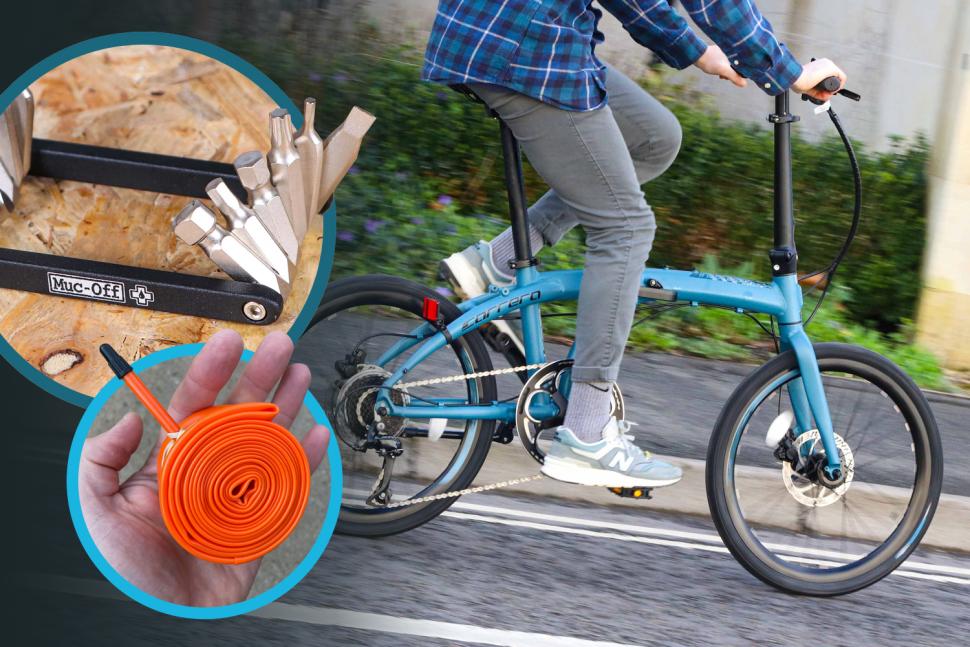 Common bike commuting mistakes and how to avoid them Sept 2024
Common bike commuting mistakes and how to avoid them Sept 2024Common bike commuting mistakes and how to avoid them — our top tips for hassle-free rides to and from work
Commuting by bike is a cost-effective alternative to driving or public transport, saving you time and stress by spending less time sitting in traffic or trying to find a parking space. It gives you a bit of exercise each day and is better for the environment, as well as saving you money in the long run. However, there are some common mistakes that can make your ride less enjoyable or even unsafe. Here are some common commuter mistakes and how to avoid them...
1. Not carrying spares or tools for roadside repairs
> How to keep your bike running smoothly
First on our list is to carry a spare tube, tyre levers, and a mini pump or CO2 canister to handle punctures - even if you're riding tubeless. Punctures are an unfortunate reality of cycling, and it’s important to be prepared for them, especially during your daily commutes if you have a meeting to get to at 9 am. Hopefully, you won’t need them, but you'll be glad to have them if you do.
A multi-tool is also a must-have for handling a range of issues that might come up during your commute. Minor mechanical failures don't need to be disastrous - they can often be fixed on the spot.
> A beginner's guide to building your first bike tool set
When choosing a multi-tool, make sure it has all the functions you need for your bike, including any sneaky Torx heads. It's also a good idea to familiarise yourself with some basic repair skills to stay prepared. Semi-regular bike maintenance on your bike will help you catch signs of wear or damage early, reducing the chances of problems occurring in the first place.
Carrying these essentials doesn’t need to take up a lot of room, especially with compact and lightweight options like TPU inner tubes available. Simply put them in your backpack, saddlebag or pannier and leave them there for whenever you need them. It's a good idea to store your spare tools and inner tube in a smaller bag to prevent them from rattling around in your rucksack or panniers and damaging the tube before you even need it.
2. Poor route planning
The route that you take to work will very much depend on where you live and where you’re heading but it’s worth considering the traffic volume, terrain and cycle infrastructure when planning your route to make it as stress-free as possible.
The shortest route or most direct route you'd take by car isn't always the best choice as it may include the busiest sections or the most elevation. By selecting the bike icon on Google Maps, you can find more cycle-friendly routes between your house and the office. Other platforms like Strava, Komoot and Cycle Streets also offer useful mapping tools. Some GPS devices, such as Garmin, even provide popularity routing, using data from online activities to recommend the most popular and cyclist-friendly routes between two points.
It’s worth familiarising yourself with your planned route, perhaps by riding it at the weekend before your first commute. You can also vary your route from day to day to keep things interesting.
3. Skimping on a lock
You might be tempted to buy a cheap lock but it's a false economy especially if you turn up at the end of the working day to find that your bike is no longer where you left it.
Don't be afraid to invest - no matter how much you spend, it’ll always be less than the cost of replacing a stolen bike and the hassle of working out how you’re then going to get home.
Look for locks with a Sold Secure Gold rating, such as the Kryptonite Kryptolok Standard U-Lock (£36.99). Some locks can attach to your bike or fit in your rucksack or panniers, but if you don’t want to lug a heavy lock on your commute, consider leaving one at work.
4. Letting your lights run out of charge
Uh oh, it’s 5:30pm in the middle of winter, you get on your bike to ride home and you find that your bike lights are out of juice. It happens!
You could consider investing in dynamo lights, which generate power as you cycle so your lights will never go out. For rechargeable lights, get into a very strict charging routine - keep a charger at work so you can recharge your lights during the day so they're ready for your ride home.
As a backup, carry a couple of emergency lights in your bag; they're small and lightweight so you'll barely notice them. Alternatively, use multiple lights on your bike, making sure they are at different charge levels to reduce the risk of both running out at the same time.
5. Forgetting a change of clothes
One of the worst things to happen is forgetting a piece of clothing. While forgetting your underwear may happen at least once and might be manageable for a day, forgetting your trousers is a much bigger issue. Our top tip is to keep a set of clothes at the office - either leave a spare set in a bag or bring some in on Monday and take it home on Friday to wash.
The same applies to not having dry kit for the ride home, as there’s nothing worse than putting soggy kit back on. If your cycle clothing gets wet on the way to work, you’ll need to dry it out during the day or have a spare set ready for the journey back. Since there’s no trusting the UK weather forecast, it’s definitely worth keeping some spare kit tucked away at work for when you’re in dire need.
6. Riding without mudguards
You can't always choose the time of day you ride to and from work, so encountering rain and wet roads is sometimes unavoidable. If you’re riding in cycling clothing you might not be too bothered if you get wet, but if you’re riding in clothes you’re going to wear for the rest of the day, it can be quite inconvenient.
Mudguards make a huge difference during your ride. They prevent spray from your tyres from soaking you, your bike, and any items you might be carrying.
7. Hugging the kerb
> Road cycling for beginners: 10 tips to transform your cycling experience
Sitting in the gutter and not riding defensively can increase your risk of accidents and reduce your ability to respond effectively to potentially dangerous situations.
There are many reasons not to hug the kerb. Generally, roads camber off to the curb so it's where everything collects which can increase the risk of punctures. It’s also where slippery drain covers are positioned, it’s where pedestrians step out and it can also make you less visible and tempt motorists to squeeze past when there’s not enough room for them to do it safely.
Riding too close to parked cars can also be dangerous because those car doors sometimes open…
For these reasons, take up the primary position in the centre of your lane when you feel that's the best option. You're fully entitled to do so and it's often the safest choice.
8. Poor clothing choices
There’s no right or wrong when it comes to what you should wear while commuting by bike - ultimately, you should choose what works best for you. However, some clothing options can make your ride more comfortable, especially for longer commutes.
If you wear jeans at work and have ever attempted to ride to work in them, you might have noticed how uncomfortable they can become over a longer distance, which can detract from the enjoyment of your ride.
While Lycra cycling shorts will provide plenty of comfort for longer rides, they might be excessive for your daily commute. Fortunately, there are plenty of cycle-specific jeans, trousers and shorts out there that are designed for both on and off the bike, so there’s no need to change when you get to work.
9. Racing!
Many of us have found ourselves unexpectedly caught in a race with a stranger, chasing an imaginary finish line for reasons we can’t quite explain. While the thrill of competition is tempting, it can risk your safety and leave you hot and sweaty - certainly not ideal if you plan to wear the same clothes for the rest of the day.
If you’re a Strava user, it’s best to avoid getting too caught up in chasing KoM or QoM segments during your daily commute and save the racing and segment hunting for the weekends.
10. Trusting the weather forecast
Weather forecasts can provide a general idea of what to expect, but they’re not always accurate, and conditions - especially in the UK - can change quickly. To avoid being caught off guard, it's a good idea to carry a small, packable waterproof jacket at all times.
Consider investing in cycling-specific clothing designed to handle various weather conditions. Items like windproof and waterproof jackets, waterproof trousers and thermal jerseys can make a big difference. `
With the right gear, you’ll stay dry and comfortable on your commute, no matter what the weather brings.
What are your commuting mishap stories? Let us know in the comments section below.
Emily is our track and road racing specialist, having represented Great Britain at the World and European Track Championships. With a National Title up her sleeve, Emily has just completed her Master’s in Sports Psychology at Loughborough University where she raced for Elite Development Team, Loughborough Lightning.
Emily is our go-to for all things training and when not riding or racing bikes, you can find her online shopping or booking flights…the rest of the office is now considering painting their nails to see if that’s the secret to going fast…
Latest Comments
- wtjs 34 min 27 sec ago
I think road.cc provides a good service, and should not be criticised for publicising these 'aspirational purchases'. They have to keep this worthy...
- Prosper0 41 min 40 sec ago
Nah I'm not sure it's the top end that's the issue. I'd hazard that if someone out there wants and can afford a 15k bike then they will still be...
- Disgusted of Tunbridge Wells 14 hours 46 min ago
"One cyclist said while trying to avoid this puddle he was nearly knocked off his bike."...
- mattw 17 hours 44 min ago
Lisa Townsend very much views her police role through a political lens....
- Bigtwin 18 hours 39 min ago
Museum thread, but hey. I had one of these, before I saw this review. And it's spot on. The review, not the bike. I put up with it for a couple...
- mattw 19 hours 16 min ago
Signed and promoted in a couple of my networks.
- wtjs 21 hours 44 min ago
Good point! Over 18 months later, and I haven't seen (could have missed it!) a long term review of this groupset
- unami 21 hours 57 min ago
https://www.autoexpress.co.uk/exclusive/365458/driver-whose-towbar-voide......
- Miller 1 day 37 min ago
Pogi and a few of the others are on the divisive new Colnago aero bike in those Insta photos.
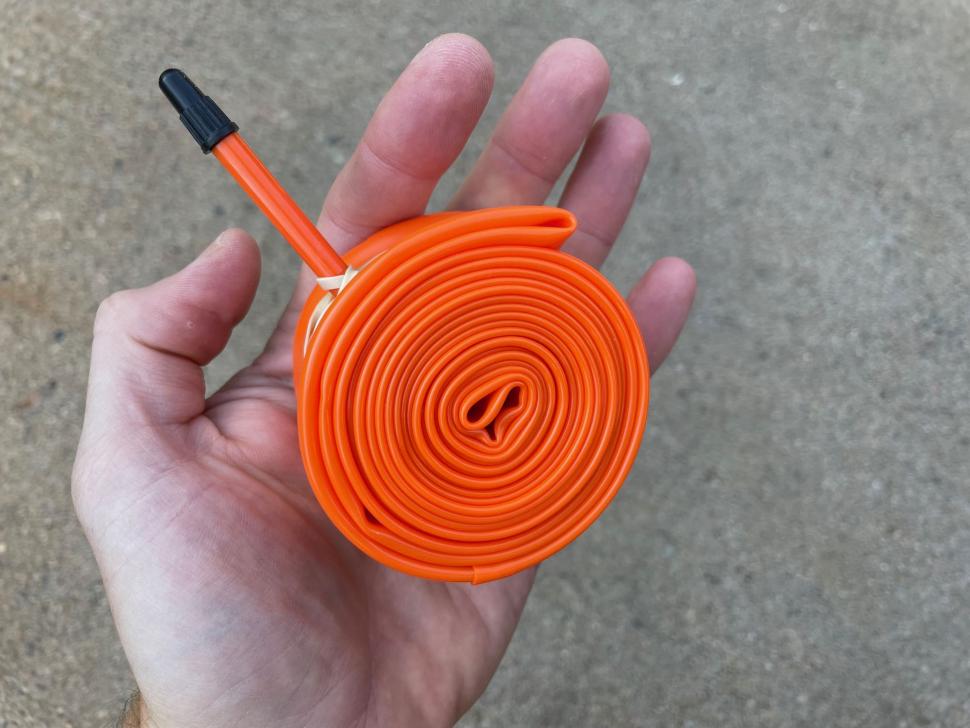

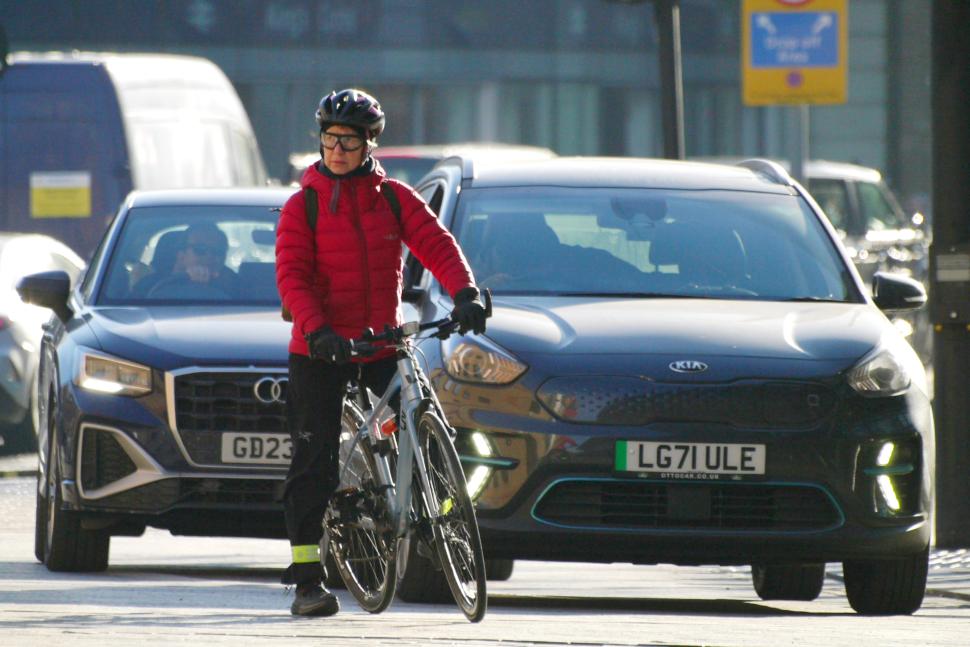


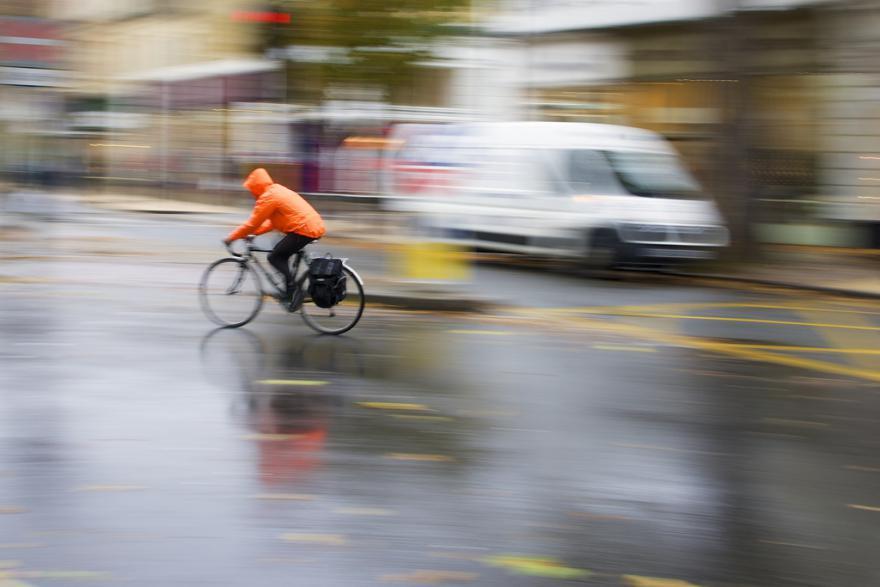

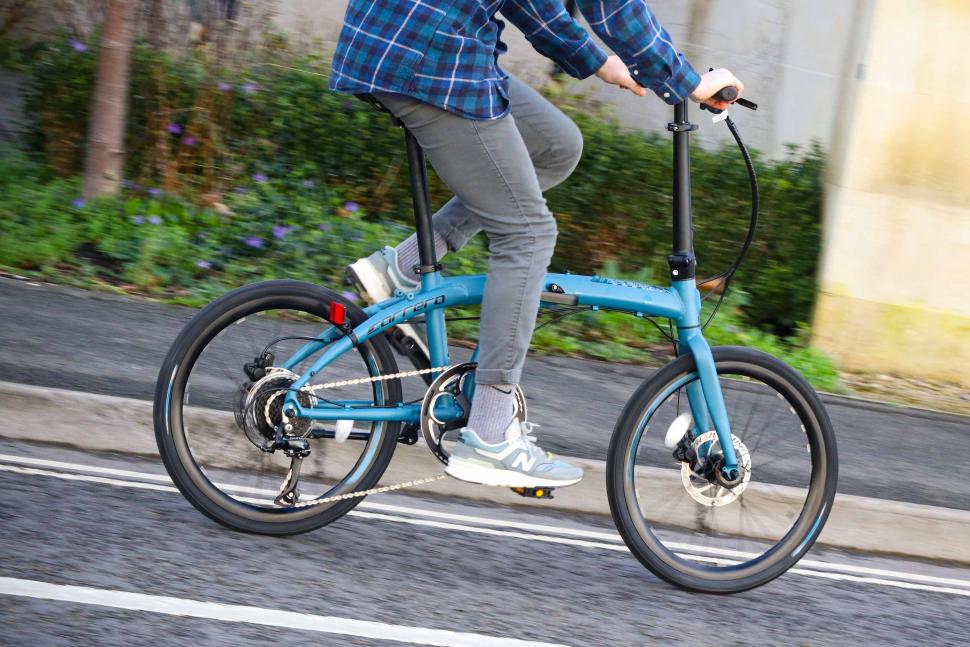

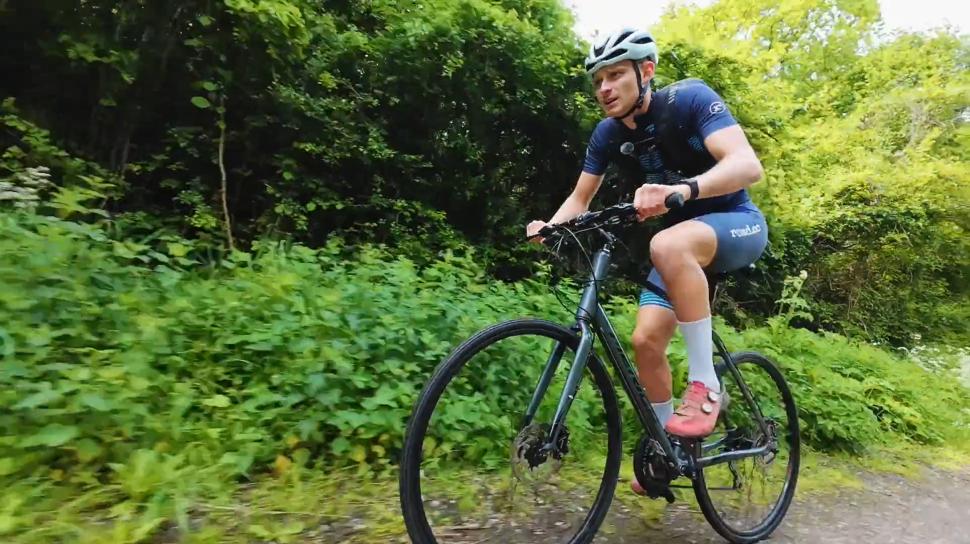

Add new comment
91 comments
Voice of experience?
The link in the text under 5 is wrong - it goes to waterproof trousers, rather than cycling jeans/trousers.
I think the problem not an incorrect link; it's that road.cc don't have a "Buyer's Guide" for cycling trousers, other than the one for waterproof trousers linked. (Although not all of the trousers on the "waterproof" trousers guide a full on waterproofs - some are relatively normal cycling trousers with just a DWR treatment).
I was pretty sure they'd done one in the past, but I may be misremembering.
If you can, leave a decent [insurance approved if applicable] lock at work; if there's not many of you, leave it locked to the bike stand.
Clothes... my morning commute is around 11 miles with a train ride breaking it up. I'm a somewhat *portly* fellow, so I tend to wear MTB shorts over my bibs.
Winter boots are an absolute godsend if you are commuting in winter ... and waterproof socks are a must.
Few things worse than wet, cold feet.
I use a pannier through choice as it's more comfortable to let the frame take the weight of the laptop.
I also use an ebike ... but that's because I'm disabled and can't walk very far.
Tip ... aluminium extendable walking stick may fit in the mini-pump holder.
I have a couple attached to the platform on my rack, so my stick is secure and out the way.
Another tip... if you only have the one bike and want to use panniers, but are worried about damaging mounting threads (like I did), check out Ortleib Quick Mount rack - takes 5 seconds to take it off, 15 seconds to put it on, and after initial assembly, it's totally tool-less.
Is this you on the 'polar express' ?!
https://www.bbc.co.uk/news/uk-scotland-glasgow-west-68241768
I'm normally on the Edinburgh > Glasgow train.
The morning I did my -7deg commute, the heating in the train was broken.
I was the warmest on the train as I carry a second pannier in winter with a couple of jackets and a body warmer ...
I got those galibier gloves you suggested but it's never been cold enough since they arrived to use them down in the soft south ! I'll have to wait for December!
🤣🤣🤣🤣
Funnily enough... that's the same look people get when ever I say "-7 deg commute" ...
... well, their eyes roll back and they have the look of an extra in a George Romero film 😂😂
I fell down a squirrel-hole after finding that Jack Nicholson image and ended up watching an interesting YouTube essay on The Shining: https://www.youtube.com/watch?v=Qr6PgWFs0Pw
I'd watched all the usual Room 237 conspiracy theories about The Shining and can spot a re-used clip in Blade Runner, but had never realised all the Jack Nicholson glances straight at the camera. It has to be intentional as he's the only character that does it and Kubrick isn't known for a lack of attention to detail. It's quite unnerving and is almost like Jack Torrance is spotting the audience out of the corner of his eye.
(Also watched a theory that the hotel is re-incarnating the murderers which explains discrepancies between character names and historical facts such as the Grady sisters/twins. Also explains the photo at the end with what appears to be Torrance in the Baphomet posture of one arm up and one arm down)
My commute is 21 km, i try to do an average of 5 out of 10 trips by bike each week (the rest by car) - i cycle a Brompton, the advantage being that if i puncture/mechanical , i can fold her and get on the bus ( route i travel has plentiful bus supply) - occasionally with a very stiff wind in my face I'll cheat with 10 km of bus use. The cycle commute is great for fitness, obviously, but so good for mental health too, especially during the pandemic - final note, i always thought my commute distance would be too long in practical terms to use the Brompton, however, my fitness has increased and now I don't think twice about using it.
If you don't mind, I am curious how you find the brompton on that sort of distance?
With it looking more likely we will retain hybrid working with 2 days in the office and possibly only 1 for some time, I am considering cycling more of my commute to avoid busy public transport.
Currently I ride 5 miles to catch a train from a better station with more options, but I am considering swapping to catch the train beyond my awful local roads and ride the rest of the way. I can take my regular bike on the train a few stops in the morning, but the return less so should there be any problem. Hence I have started to think about a brompton which can be folded and taken on train/underground. The route I am looking at would be between 20-25 miles by bike.
I commute 25 km a day. Only sensible ride - a reasonable entry level road bike. Far faster on the flattish route I've got than a 25 kg electric upright monster. With tough, mediocre tyres one puncture per year. So much fun I get up early to do extra miles in summer (and winter). Clothes? Lycra, what else? Stop in a cul de sac a few hundred metres before work and pull on a pair of trousers and a shirt. Finish changing inside. If this is problematic, sort out your problems. Works great for me.
Spend enough money, and you can get an 8.5kg electric road bike
https://road.cc/content/tech-news/hps-launch-lightest-e-bike-world-280881
But even at more reasonable prices, there are electric bikes that aren't 25kg monsters, with more than enough range for commuting. (I don't have one, but I'm tempted.)
Can't see the point myself, but if your problem is a workplace you can't just turn up in in cycling kit, and it sorts that for you, good for you.
Personally I've had commutes short enough it wasn't worth changing at all (variously from a house in town, a park and ride car park, or a rail station), with a gentle cycle not working up a sweat still faster than congested cars, or long enough that I wanted to cool down and shower before changing, not half change by the side of the road. (Every cul-de-sac within hundreds of metres of my office is a car park.)
(At the moment it's rather academic, because our office is closed and we're all working from home.)
1. Only when the tyre sidewall decides to split. Las time it happened I rode the last mile on a flat tyre and got a new tyre brought into work and left the bike ready to fit the new tyre at some point during the shift which was done in 10 minutes.
2. No, rarely see anybody else commuting to work when I do
3. Only when the ride to work was a mile and half and with flat pedal cause of workboots.
4. No, I'm not that stupid.
5. Again a no, shortest route home isn't the fastest. I can go faster by going further and the 2.5 mile shorter route is only 7 minutes quicker.
6. No, they stay on year round.
7. Work clothes stay in work and only come home when I take clean in, never the other way round. Been caught out with underwear once or twice but have a bag in my locker with spares in along with a pair of socks, just in case.
8. Lock stays in work, far too heavy to be hauling that to/from work on a daily basis.
9. It has happened but my kit gets hung up when I change before work and wet kit is hung but spread around more to allow air to circulate and dry it. There have been times when kit has felt damp to touch before I put it on but after a few minutes of wearing it it soon feels OK.
10. Been there but I do ride with extra lights so if one goes the other still has charge and I try and keep them on different charge states so one is 100% and the other is 50%.
Forgetting first and foremost that cycling is supposed to be fun and pleasurable (good exercise, social etc) as opposed to hammering between home and work in all weathers, obsessing about reducing the commute time (route, bike weight) and seeing every motorist as a homicidal maniac that wants to kill you (which is pretty true at commuting times), consequently spending money on video cams to gather evidence if they manage to get you.
“cycling is supposed to be” whatever anybody wants it to be.
You don’t get to decide on my behalf what it’s supposed to be, or how I cycle; in return I don’t get to decide on your behalf.
This article makes bicycling much more complicated than it need be.
Some perspective.
On average a Dutchie will cycle apprx 300 trips per year for 1000km = 3.4km/trip. That's an average though. Many trips are much less and many much more. Almost any trip of less than about 12km round-trip will be taken on a bicycle (or walking + transit) and many people routinely ride much greater distances. Probably 99% of these are in regular street clothes, no helmet or gloves, on basic Dutch Omafiets & Opafiets.
I've often ridden over 50km in jeans & button down shirt. Jeans are completely comfortable on a good upright bicycle. A friend rides from Assen to Gronnengin several days per week - in jeans. School children riding 10km or more is not at all unusual.
Some Dutch do occasionally ride to work in lycra (and I have done so myself) but this is almost always because they want to get in more of a workout.
----
I have ridden all over London (lived in South Kennsington) - in jeans. It is not a problem. Having also begun training rides in London wearing lycra I can say that drivers give much more consideration to me when I'm wearing jeans than when I'm wearing lycra. Lycra & jersey in London seems almost a target for some motorists.
Cycling in London is far more harrowing than anywhere in NL, Scandinavia, Germany or many other countries. London needs better infrastructure.
-----
This over complicating thing seems an english speaking thing. The only people who do it are Brits, Americans and OZies. Why is this?
More thoughts...
Dutch (and most others outside of english speaking countries) don't have to worry about charging lights because the lights are powered by a dynamo. They're always on the bike and always (cough) work. New LED lights seem 100% reliable. Bulbs in older lights would burn out or come loose and if someone only rode in a well lit city then they'd often never fix it.
People sweat much less (usually not at all) when riding an upright bike. Not sure why but it seems known by most people. I don't think it's speed. I tried a hybrid for a while. It wasn't as comfortable, no faster and I sweated more.
Maintenance is not a thing as the drivetrain is fully enclosed. Occasionaly airing tyres is all that is needed. People probably should clean and oil things once every year or two but nobody does.
Some info on bikes & sweating:
https://streets.mn/2018/07/02/dont-sweat-it/
https://www.treehugger.com/bikes/why-upright-right-when-you-are-riding-b...
http://localmile.org/city-bikes/
People sweat less when they ride slower
People ride slower where the road environment isn't hostile to this
People ride upright bikes in countries where the environment is more tolerant of casual cycling.
If I try riding at an easy pace on the road I will be passed by considerably more vehicles and some of those will be very uncomfortable. If I ride flat out, I tend not to have this problem. If I had a segregated route I could ride a more upright bike at an easy pace and not sweat. I don't mind the sewat though as I can shower when I get to work instead of before leaving home, so it makes no difference to me. If anything it probably saves me money on hot water.
Some additions...
Canal towpaths were not built as dog toilets or for having a walk either.
There has been a lot of active travel money from local authorities put into the waterways.
And for that matter the canals themselves were not built for leisure.
I commute every day without any tools or spares whatsoever and have had to walk home once in 19 years -and that was because the chain broke due to aaulty manufacture . Riding a sensible bike and maintaining it properly at home - including making sure the tyre pressures are always OK - goes a long long way to having a dependable bike.
Not sure I've been that lucky, but 3 punctures in 10 years, and a folding bike means for city commuting flagging down a taxi after a puncture is often less hassle. Especially if you are aiming for a specific train.
@nicmason
I agree that towpaths should be ridden at considerate speeds, but does anyone actually tow barges any more? I thought the internal combustion engine put the dampeners on that.
yes but its what they where built for. On the whole they are narrow and if you are walking along one its quite difficult to have bell dinging cyclists whizzing up in fornt and behind you every few seconds exapecting you to get out of the way.
I cycle 13 miles into London every day and tried a tow path once. Not for me.
Yeah, I've only used one once (in London) and decided never to bother in future. Slow and annoying and I _felt_ anti-social just being there.
Plus I kept getting irritated at the existence of boatists. Who are these people? Why do they have all this space allocated to them? What is the purpose of their boating?
Why don't they use the boating lanes, pay tax, wear helmets and hi-viz and they're always jumping red locks...
Pages